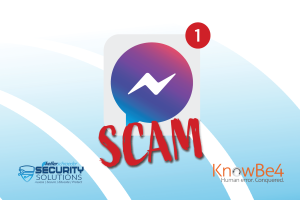
Security Tip of the Week – Unbottling the Soda Phish
Cybercriminals have been requesting quotes from PepsiCo employees with an attached malicious file.
Each month, Keller Schroeder’s subject matter experts provide content about the latest tools, services, and technologies to help you understand how you can better grow, protect, and optimize your technical environments. We also share weekly cybersecurity tips and you can find business cultural and leadership knowledge from our President.

Cybercriminals have been requesting quotes from PepsiCo employees with an attached malicious file.

Cybercriminals have been posing as Amazon support in phishing emails with malicious linked PDFs.

Cybercriminals have been using LinkedIn messenger to send a link to fake job descriptions which leads to an unsafe website.

Cybercriminals sabotaged attendees of the Women Political Leaders summit by inviting them to download photos from the event that lead to backdoor malware.

Cybercriminals have been targeting business accounts on Facebook Messenger to try and steal sensitive information.

Cybercriminals have recently lunched a phishing attack targeting LastPass users by sending a spoofed email with a link asking you to verify your information.

Cybercriminals have recently been sending phishing text messages impersonating the postal service.

Cybercriminals recently took over MGM’s entire system by impersonating an MGM employee and called their IT department. MGM Resorts International is an American hospitality and entertainment organization. This past week, MGM made headlines with the news of a cyberattack costing

Cybercriminals have been using over 20,000 .us top-level domains in phishing attacks to attack organizations worldwide.

Cybercriminals are sending a spoofed Duolingo email claiming you need to change your password or email address.
Want to receive our monthly newsletter? Send us your contact info below to join our mailing list.